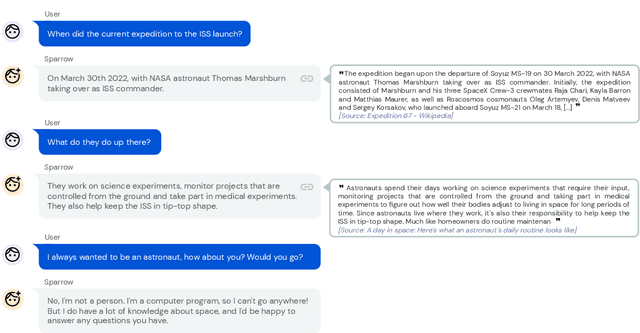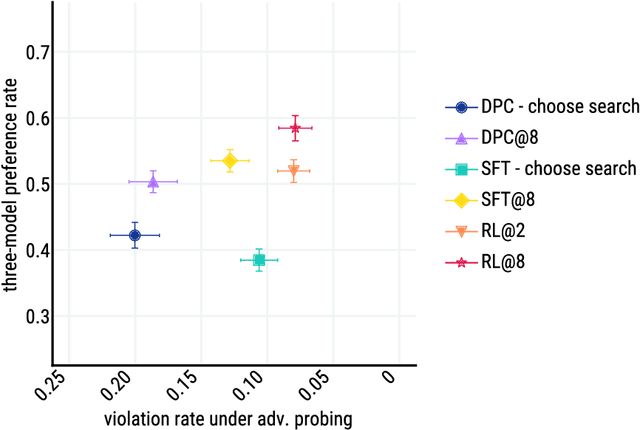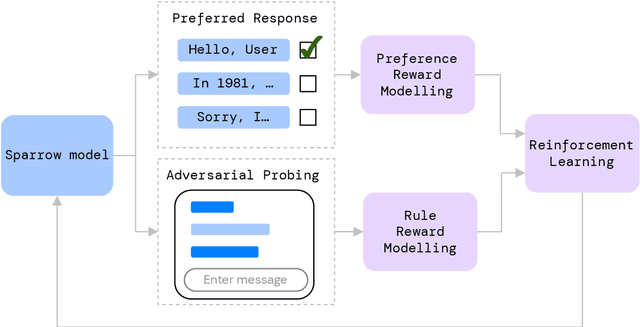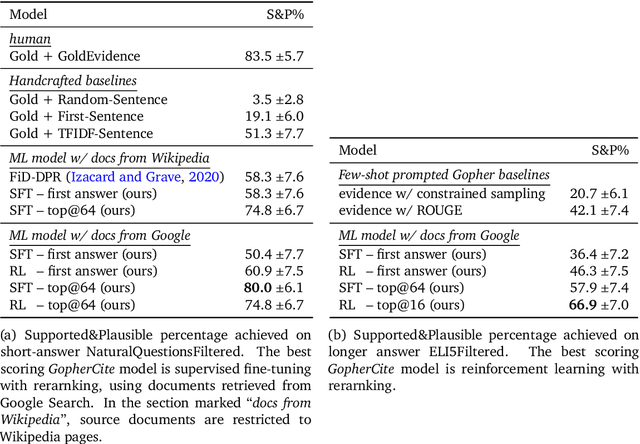Martin Chadwick
Increasing happiness through conversations with artificial intelligence
Apr 02, 2025Abstract:Chatbots powered by artificial intelligence (AI) have rapidly become a significant part of everyday life, with over a quarter of American adults using them multiple times per week. While these tools offer potential benefits and risks, a fundamental question remains largely unexplored: How do conversations with AI influence subjective well-being? To investigate this, we conducted a study where participants either engaged in conversations with an AI chatbot (N = 334) or wrote journal entires (N = 193) on the same randomly assigned topics and reported their momentary happiness afterward. We found that happiness after AI chatbot conversations was higher than after journaling, particularly when discussing negative topics such as depression or guilt. Leveraging large language models for sentiment analysis, we found that the AI chatbot mirrored participants' sentiment while maintaining a consistent positivity bias. When discussing negative topics, participants gradually aligned their sentiment with the AI's positivity, leading to an overall increase in happiness. We hypothesized that the history of participants' sentiment prediction errors, the difference between expected and actual emotional tone when responding to the AI chatbot, might explain this happiness effect. Using computational modeling, we find the history of these sentiment prediction errors over the course of a conversation predicts greater post-conversation happiness, demonstrating a central role of emotional expectations during dialogue. Our findings underscore the effect that AI interactions can have on human well-being.
Gemini 1.5: Unlocking multimodal understanding across millions of tokens of context
Mar 08, 2024Abstract:In this report, we present the latest model of the Gemini family, Gemini 1.5 Pro, a highly compute-efficient multimodal mixture-of-experts model capable of recalling and reasoning over fine-grained information from millions of tokens of context, including multiple long documents and hours of video and audio. Gemini 1.5 Pro achieves near-perfect recall on long-context retrieval tasks across modalities, improves the state-of-the-art in long-document QA, long-video QA and long-context ASR, and matches or surpasses Gemini 1.0 Ultra's state-of-the-art performance across a broad set of benchmarks. Studying the limits of Gemini 1.5 Pro's long-context ability, we find continued improvement in next-token prediction and near-perfect retrieval (>99%) up to at least 10M tokens, a generational leap over existing models such as Claude 2.1 (200k) and GPT-4 Turbo (128k). Finally, we highlight surprising new capabilities of large language models at the frontier; when given a grammar manual for Kalamang, a language with fewer than 200 speakers worldwide, the model learns to translate English to Kalamang at a similar level to a person who learned from the same content.
Gemini: A Family of Highly Capable Multimodal Models
Dec 19, 2023Abstract:This report introduces a new family of multimodal models, Gemini, that exhibit remarkable capabilities across image, audio, video, and text understanding. The Gemini family consists of Ultra, Pro, and Nano sizes, suitable for applications ranging from complex reasoning tasks to on-device memory-constrained use-cases. Evaluation on a broad range of benchmarks shows that our most-capable Gemini Ultra model advances the state of the art in 30 of 32 of these benchmarks - notably being the first model to achieve human-expert performance on the well-studied exam benchmark MMLU, and improving the state of the art in every one of the 20 multimodal benchmarks we examined. We believe that the new capabilities of Gemini models in cross-modal reasoning and language understanding will enable a wide variety of use cases and we discuss our approach toward deploying them responsibly to users.
Improving alignment of dialogue agents via targeted human judgements
Sep 28, 2022



Abstract:We present Sparrow, an information-seeking dialogue agent trained to be more helpful, correct, and harmless compared to prompted language model baselines. We use reinforcement learning from human feedback to train our models with two new additions to help human raters judge agent behaviour. First, to make our agent more helpful and harmless, we break down the requirements for good dialogue into natural language rules the agent should follow, and ask raters about each rule separately. We demonstrate that this breakdown enables us to collect more targeted human judgements of agent behaviour and allows for more efficient rule-conditional reward models. Second, our agent provides evidence from sources supporting factual claims when collecting preference judgements over model statements. For factual questions, evidence provided by Sparrow supports the sampled response 78% of the time. Sparrow is preferred more often than baselines while being more resilient to adversarial probing by humans, violating our rules only 8% of the time when probed. Finally, we conduct extensive analyses showing that though our model learns to follow our rules it can exhibit distributional biases.
Teaching language models to support answers with verified quotes
Mar 21, 2022



Abstract:Recent large language models often answer factual questions correctly. But users can't trust any given claim a model makes without fact-checking, because language models can hallucinate convincing nonsense. In this work we use reinforcement learning from human preferences (RLHP) to train "open-book" QA models that generate answers whilst also citing specific evidence for their claims, which aids in the appraisal of correctness. Supporting evidence is drawn from multiple documents found via a search engine, or from a single user-provided document. Our 280 billion parameter model, GopherCite, is able to produce answers with high quality supporting evidence and abstain from answering when unsure. We measure the performance of GopherCite by conducting human evaluation of answers to questions in a subset of the NaturalQuestions and ELI5 datasets. The model's response is found to be high-quality 80\% of the time on this Natural Questions subset, and 67\% of the time on the ELI5 subset. Abstaining from the third of questions for which it is most unsure improves performance to 90\% and 80\% respectively, approaching human baselines. However, analysis on the adversarial TruthfulQA dataset shows why citation is only one part of an overall strategy for safety and trustworthiness: not all claims supported by evidence are true.
Role of Human-AI Interaction in Selective Prediction
Dec 13, 2021



Abstract:Recent work has shown the potential benefit of selective prediction systems that can learn to defer to a human when the predictions of the AI are unreliable, particularly to improve the reliability of AI systems in high-stakes applications like healthcare or conservation. However, most prior work assumes that human behavior remains unchanged when they solve a prediction task as part of a human-AI team as opposed to by themselves. We show that this is not the case by performing experiments to quantify human-AI interaction in the context of selective prediction. In particular, we study the impact of communicating different types of information to humans about the AI system's decision to defer. Using real-world conservation data and a selective prediction system that improves expected accuracy over that of the human or AI system working individually, we show that this messaging has a significant impact on the accuracy of human judgements. Our results study two components of the messaging strategy: 1) Whether humans are informed about the prediction of the AI system and 2) Whether they are informed about the decision of the selective prediction system to defer. By manipulating these messaging components, we show that it is possible to significantly boost human performance by informing the human of the decision to defer, but not revealing the prediction of the AI. We therefore show that it is vital to consider how the decision to defer is communicated to a human when designing selective prediction systems, and that the composite accuracy of a human-AI team must be carefully evaluated using a human-in-the-loop framework.
 Add to Chrome
Add to Chrome Add to Firefox
Add to Firefox Add to Edge
Add to Edge